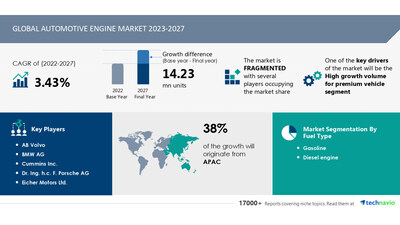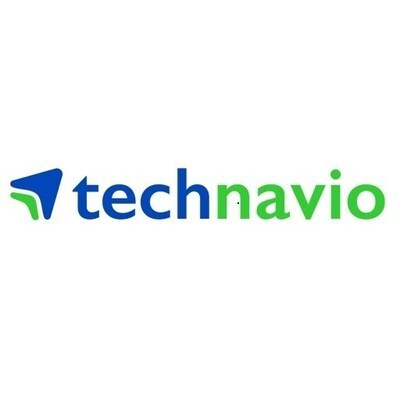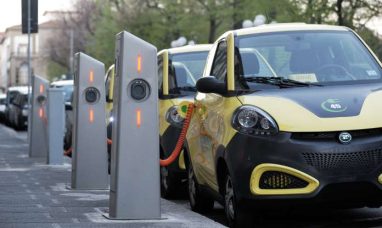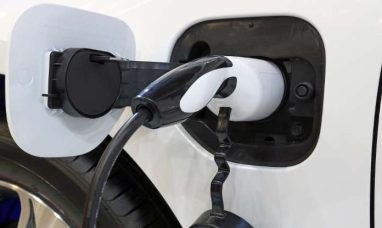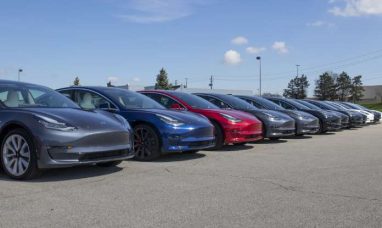NEW YORK, Nov. 12, 2024 /PRNewswire/ — Report on how AI is redefining market landscape – The global automotive engine market size is estimated to grow by USD 14.23 million from 2023-2027, according to Technavio. The market is estimated to grow at a CAGR of 3.43% during the forecast period. High growth volume for premium vehicle segment is driving market growth, with a trend towards increasing demand for fuel efficiency. However, increasing popularity of electric vehicles poses a challenge.Key market players include AB Volvo, BMW AG, Cummins Inc., Dr. Ing. H.c. F. Porsche AG, Eicher Motors Ltd., Ford Motor Co., General Motors Co, Honda Motor Co. Ltd, Hyundai Motor Co., MAHLE GmbH, Maruti Suzuki India Ltd., Mazda Motor Corp., Mercedes Benz Group AG, Mitsubishi Motors Corp., Renault SAS, Stellantis NV, Toyota Motor Corp., Trelleborg AB, and Yamaha Motor Co. Ltd..
Key insights into market evolution with AI-powered analysis. Explore trends, segmentation, and growth drivers- View Free Sample PDF
|
Automotive Engine Market Scope |
|
|
Report Coverage |
Details |
|
Base year |
2022 |
|
Historic period |
2017 – 2021 |
|
Forecast period |
2023-2027 |
|
Growth momentum & CAGR |
Accelerate at a CAGR of 3.43% |
|
Market growth 2023-2027 |
14.23 mn units |
|
Market structure |
Fragmented |
|
YoY growth 2022-2023 (%) |
3.69 |
|
Regional analysis |
APAC, North America, Europe, South America, and Middle East and Africa |
|
Performing market contribution |
APAC at 38% |
|
Key countries |
US, China, Japan, India, and Germany |
|
Key companies profiled |
AB Volvo, BMW AG, Cummins Inc., Dr. Ing. H.c. F. Porsche AG, Eicher Motors Ltd., Ford Motor Co., General Motors Co, Honda Motor Co. Ltd, Hyundai Motor Co., MAHLE GmbH, Maruti Suzuki India Ltd., Mazda Motor Corp., Mercedes Benz Group AG, Mitsubishi Motors Corp., Renault SAS, Stellantis NV, Toyota Motor Corp., Trelleborg AB, and Yamaha Motor Co. Ltd. |
Market Driver
The automotive engine market is experiencing significant trends due to various factors. Automobile industries have faced challenges from lockdowns and travel restrictions, leading to a decline in vehicle production. However, there’s a growing focus on engine control units, lifecycle of engines, and lightweight vehicles. Zero emissions, hybrids, compact engines, and electrification are key areas of investment. Neptune Ship and ammonia are emerging as potential fuels for engines, while stringent emission norms and fuel efficiency remain top priorities. Legislation drives the shift towards environment-friendly engines, with a focus on reducing greenhouse gas emissions. Diesel fuel consumption is decreasing, and legislative bodies are targeting harmful vehicle pollutants. Companies like Renault and General Motors are investing in fuel injection technology, electric buses, and complex components for longer vehicle life. Simulink models and control strategies offer flexibility in engine performance simulations. The replacement cycle for engines is increasing, creating a revenue pocket for engine production. Fuel type, vehicle segments, and engine production all impact engine performance and vehicle emissions. Aluminum alloys are popular for lightweight components, and the torque curve and engine cycle are critical factors in engine design. Electricity is the future, and car pollutants are being addressed through emission testing and advanced engine technology.
The automotive industry is experiencing a growing focus on fuel efficiency, safety, and reduced emissions to enhance consumer driving experience. This trend increases the operational efficiency of automotive engines, resulting in lower fuel costs for Original Equipment Manufacturers (OEMs). Consequently, efficient automotive engine suppliers are favored due to their high-performance features and low fuel usage. For instance, Volvo Buses introduced a new premium coach platform in June 2022, saving approximately 9% on fuel costs. The increasing demand for fuel-efficient vehicles will boost the automotive engine market, improving vehicle efficiency and driving market growth throughout the forecast period.
Request Sample of our comprehensive report now to stay ahead in the AI-driven market evolution!
Market Challenges
- The automotive engine market faces significant challenges due to the impact of lockdowns and travel restrictions on vehicle production. The shift towards environmentally friendly vehicles, such as hybrids and electric buses, is accelerating. Engine control units play a crucial role in optimizing engine performance and fuel efficiency. However, the lifecycle of engines and the replacement cycle pose revenue opportunities. The transition to zero emissions and lightweight vehicles is driving innovation in compact engines, hybrid electric, and electrification. Traditional fuel types like diesel face regulatory pressure due to stringent emission standards. Neptune’s Neptune Ship project explores alternative fuels like ammonia. Manufacturers focus on lightweight components to reduce greenhouse gas emissions and improve fuel consumption. Legislative bodies impose stricter regulations on harmful vehicle emissions, affecting diesel vehicles and passenger cars. Fuel injection systems, engine control strategies, and simulations using tools like Simulink help optimize engine performance. Flexible control units enable electricity storage and distribution in electric vehicles. Car pollutants, torque curve, engine cycle, and aluminum alloys are essential considerations in engine design. Renault and General Motors lead the way in emissions testing and fuel type diversification. The future of the automotive engine market lies in sustainable, efficient, and flexible engine solutions.
- The automotive engine market is witnessing significant growth in the electric vehicle (EV) segment. Sustainability and environmental concerns are driving this trend, leading to increased demand for EVs. Key factors fueling this growth include subsidies from governments, declining battery electric vehicle (BEV) prices, and the launch of affordable EV variants. Additionally, the expansion of EV charging infrastructure, rising consumer awareness, and regulations banning or limiting fuel-powered vehicles are further boosting demand. Notable markets for EVs include China, the US, Japan, Norway, and Germany.
Discover how AI is revolutionizing market trends- Get your access now!
Segment Overview
This automotive engine market report extensively covers market segmentation by
- Type
- 1.1 In-line engine
- 1.2 V-type engine
- 1.3 Flat engine
- Geography
- 2.1 APAC
- 2.2 North America
- 2.3 Europe
- 2.4 South America
- 2.5 Middle East and Africa
1.1 In-line engine- In-line engines, also known as straight engines, are the most widely used engine configuration in the automotive industry. The primary factors fueling their popularity are engine downsizing and the increasing adoption of turbochargers. In-line engines offer improved fuel efficiency through downsizing, while turbochargers amplify engine performance. Notable automakers, including BMW, Mercedes-Benz, Toyota Motor, and Volkswagen, are integrating downsized in-line engines to enhance vehicle performance. These engines are lightweight and compact, making them ideal for front-wheel drive vehicles, which are the most commonly produced in the industry. In-line engines are economical to manufacture and maintain. The most common configurations are the 4-cylinder or in-line four engines, but some manufacturers also use 6- and 8-cylinder configurations, such as straight-6 and straight-8 engines. Mercedes-Benz, for instance, is reconfiguring its engines from V-6 to straight-6 layouts, offering smoother engine performance and lower emissions. BMW, Ford Motor, Chevrolet, Toyota, Suzuki, and Volvo are among the carmakers using straight-6 engines in their models. In 2018, BMW introduced a new 3.0-liter six-cylinder (straight-6) engine for the 2020 BMW M340i, featuring an aluminum crankcase and cylinder head, and lighter impellers for engine downsizing and enhanced performance. As advanced engine technologies like turbocharging and direct injection gain traction in the automotive sector, OEMs are transitioning from V6 engines to more fuel-efficient in-line four-cylinder engines. Cars like the Maruti Alto 800, Maruti Celerio, Tata Tiago, Honda City, Toyota Corolla, Hyundai Elantra, Hyundai Verna, and Chevrolet Cruise are some examples of vehicles featuring in-line engines.
Download a Sample of our comprehensive report today to discover how AI-driven innovations are reshaping competitive dynamics
Research Analysis
The automotive engine market is experiencing significant changes due to various factors. The automobile industry has been heavily impacted by lockdowns and travel restrictions caused by the global pandemic. This has led to a decrease in demand for traditional internal combustion engines. However, the focus on reducing car pollutants and improving fuel efficiency has accelerated the adoption of advanced engine technologies. Engine control units play a crucial role in optimizing engine performance and reducing emissions. The lifecycle of engines is being extended through the use of lightweight materials like aluminum alloys and the development of compact engines. Zero emissions and hybrid vehicles are becoming increasingly popular, with hybrid electric engines offering the benefits of both internal combustion and electric power. The electrification of vehicles is gaining momentum, with electric engines offering significant reductions in fuel consumption and emissions. Simulation tools like Simulink are being used to develop control strategies and optimize engine performance through simulations of engine cycles and torque curves. Neptun Ship, a leading provider of engine control units, offers flexible solutions for meeting emission standards and improving engine efficiency. Engine production is evolving to meet the demands of the changing market, with a focus on reducing weight, improving efficiency, and reducing emissions. The future of the automotive engine market lies in the development of advanced engine technologies and the integration of electricity into the powertrain.
Market Research Overview
The automotive engine market is experiencing significant shifts due to various factors including the impact of lockdowns and travel restrictions caused by the pandemic. The focus on engine control units and lifecycle of engines is becoming increasingly important as automakers strive for improved fuel efficiency and stringent emission standards. The trend towards lightweight vehicles and zero emissions is driving the demand for compact engines, hybrids, and electrification. Neptun Ship and other alternative fuels like ammonia are gaining attention as potential replacements for conventional fuel. The electrification of vehicle segments, from passenger cars to electric buses, is leading to the production of complex components with longer longevity characteristics. The flexibility of control strategies, simulated using tools like Simulink, is essential for optimizing engine performance and reducing vehicle emissions. Car pollutants such as greenhouse gases and harmful vehicle emissions are under scrutiny from legislative bodies, pushing the industry towards environment-friendly solutions. Fuel consumption, engine production, and vehicle segments continue to evolve, with a record high focus on fuel injection technology and torque curve optimization. Aluminum alloys and other lightweight components are essential in reducing vehicle weight and improving fuel efficiency. The replacement cycle for engines is becoming longer, creating a revenue pocket for engine manufacturers. The future of the automotive engine market lies in the balance between engine performance, fuel consumption, and environmental sustainability.
Table of Contents:
1 Executive Summary
2 Market Landscape
3 Market Sizing
4 Historic Market Size
5 Five Forces Analysis
6 Market Segmentation
- Type
- In-line Engine
- V-type Engine
- Flat Engine
- Geography
- APAC
- North America
- Europe
- South America
- Middle East And Africa
7 Customer Landscape
8 Geographic Landscape
9 Drivers, Challenges, and Trends
10 Company Landscape
11 Company Analysis
12 Appendix
About Technavio
Technavio is a leading global technology research and advisory company. Their research and analysis focuses on emerging market trends and provides actionable insights to help businesses identify market opportunities and develop effective strategies to optimize their market positions.
With over 500 specialized analysts, Technavio’s report library consists of more than 17,000 reports and counting, covering 800 technologies, spanning across 50 countries. Their client base consists of enterprises of all sizes, including more than 100 Fortune 500 companies. This growing client base relies on Technavio’s comprehensive coverage, extensive research, and actionable market insights to identify opportunities in existing and potential markets and assess their competitive positions within changing market scenarios.
Contacts
Technavio Research
Jesse Maida
Media & Marketing Executive
US: +1 844 364 1100
UK: +44 203 893 3200
Email: [email protected]
Website: www.technavio.com/
![]() View original content to download multimedia:https://www.prnewswire.com/news-releases/automotive-engine-market-to-grow-by-usd-14-23-million-2023-2027-driven-by-rising-demand-for-premium-vehicles-ai-powered-report-highlights-market-trends—technavio-302302827.html
View original content to download multimedia:https://www.prnewswire.com/news-releases/automotive-engine-market-to-grow-by-usd-14-23-million-2023-2027-driven-by-rising-demand-for-premium-vehicles-ai-powered-report-highlights-market-trends—technavio-302302827.html
SOURCE Technavio

Featured Image: Megapixl @ Dononeg










